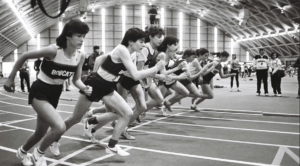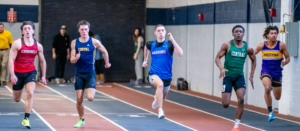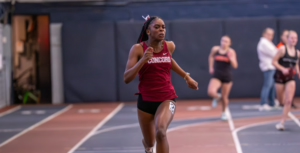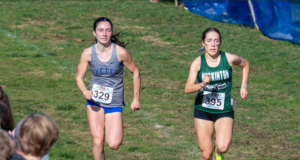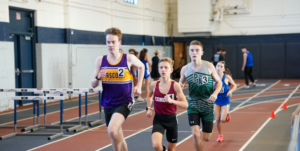By Mike Smith
As we work our way towards the end of the winter season and the start of the spring seasons I think it’s important when school district’s decide on how to support their spring programs, when it comes to safety concerns, not all programs are alike. Much like this winter, some sports were able to operate while others, like indoor track were not. With only a handful of facilities and meets usually consisting of 500 or so athletes confined to competing inside and all breathing the same air, indoor track made no sense. And while basketball and hockey were able to continue in the winter, it was all based on small numbers, no fans and the idea of regional schedules.
As we move forward with spring planning, it’s important to realize that with proper planning, the benefits of outdoor exercise and activity are no better exemplified by the sport of track and field. As a non contact sport, where the average race time is less than five minutes across all distances, the likelihood of transmission is incredibly low.
Much like the fall cross country season, for many of the events, the goal is to put as much distance as you can between yourself and the competition. Looking back at our fall cross country championships we can see how event management, with waves starts and reduced start line time were effective methods for reducing potential for transmission. Take that idea forward to spring, with no or minimal clerking, we can put athletes on the start line safely and efficiently.
 And off the track, things are even easier. Throwers and jumpers already compete one at a time; social distancing by event design. Taking things one step further and having the thrower 100% in charge of their own implements makes these events extraordinarily safe.
And off the track, things are even easier. Throwers and jumpers already compete one at a time; social distancing by event design. Taking things one step further and having the thrower 100% in charge of their own implements makes these events extraordinarily safe.
From a coach’s perspective, operating in cohort groups is even easier as event groups tend to train together and would easily be able to break into separate bubbles. This makes practices easier than with other sports that essentially all the athletes intermingle based on the need to work through specific plays, something that doesn’t happen in track and field. Many of the same people that coach spring track have already been through many of the protocols that will make the sport safe as many are coaches with their school’s cross country programs.
Many states have already been successfully conducting high school meets both indoors and out. In the more southerly states that traditionally do not have indoor track, they’ve successfully transitioned directly to outdoor track from cross country with no interruption to their regular yearly schedule.
Coaches and the spring track committee have already been developing a set of protocols for coaches, athletes and athletic programs to follow to minimize risk of transmission. Similar to the protocol outlined for the fall in cross country, the protocols will be laid out in a simple to follow, easy to understand format identifying the responsibilities and expectations of coaches, athletes and meet personnel with a focus on personal distancing and hygiene. 
And God knows the athletes need the season. Having lost last year’s spring season and then having no indoor this winter, many athletes are craving the structure and support their school’s track & field programs and coaches provide their young adult lives. And who better to guide them through arguably the worst health crisis of our time than the coaches that have preached healthy habits and making good choices their entire high school athletic careers. These coaches serve as strong healthy role models and show athletes the importance of dedication to themselves and to a healthy lifestyle that includes exercise and proper eating.
As athletic departments and school administrators work to navigate the safe and successful opening of spring sports, it should be noted that track an field is a different animal than most other sports that fall under their purview, and with smart planning, careful oversight by dedicated coaches and personnel, and a commitment of safety by the athletes themselves, high school track and field can successfully be conducted in New Hampshire.







